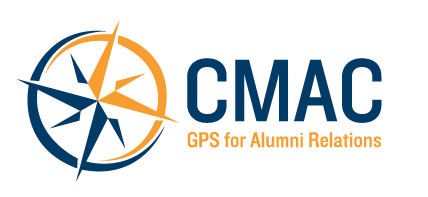How to move beyond an alumni engagement plateau
I’ve often been critical of technology solutions in the alumni and career services space throughout the last few years. I’ve discussed alumni network platforms like Graduway and PeopleGrove. I’ve questioned the effectiveness of solutions like Handshake designed to help students land jobs and internships. I try to keep the conversation going about the technology we're using because I care about finding solutions that work for our stakeholders and help us meet our goals as engagement strategists.
There is no perfect solution, of course. Nevertheless, critical evaluation and reflection on these tools are essential even as we continue to ingrain them into our programs and processes.
As tough as I’ve been on network platforms and other technology solutions, one thing is clear — most colleges, universities, independent schools, and many different types of educational organizations have all bought into these solutions and allocated significant resources towards their successful implementation. Senior administrators in career services offices and on alumni teams have also put a lot of professional capital on the line in ushering in the technology. Implementation and strong usage of these network development tools is really important for most alumni and career teams.
We’re now approximately a decade into the era of alumni network platforms in higher education. Educational organizations have found success particularly in identifying alumni interested in participating as volunteers. As alumni and students onboard the network platforms for the first time, the information that’s captured is hugely helpful for engagement and fundraising teams.
However, I think the question remains whether or not alumni network platforms solve the problem of scaling up alumni-student connections and mentoring programs sufficiently. Do these one-size-fits-all network platform solutions consider the needs and behaviors of the majority of end-users?
On average, I’m receiving feedback from senior alumni and career services leaders that they're plateauing at about 5-10% of contactable alumni elect to activate accounts in alumni network platforms, and fewer engage consistently after the first log-in. The percentage is much lower for students.
To me, those percentages sound like a success story. If 5-10% of alumni sign-up for a network platform, that’s good, so long as there's also active participation. I’ve written about digital community building before, and it’s clear that the best ones grow over time with a slow and steady win the race mentality. So it’s ok that a small percentage of alumni and students have activated accounts on network platforms. That’s the way it should be with online communities. However, those early adapters must be cultivated like volunteers, and new members need to be courted with determined outreach in an ongoing capacity and given jobs to do that sparks activity. Activity is the key to growth, not marketing. It’s tough to keep activity flowing in online communities, and they require constant management and stimulation.
So, what about the other 90-95% of alumni and an equally large percentage of students that do not elect to participate on network platforms? Are we comfortable saying those unengaged alumni won’t offer professional advice to students or recent graduates?
It’s hard for me to believe that 90,000 out of 100,000 contactable alumni wouldn’t help a graduating senior providing that such a request was relevant, simple, and didn’t take much time.
I’ve always believed that reaching and engaging a larger percentage of alumni and students can be achieved if we pay careful attention to providing solutions that don’t require participants to adopt a new digital behavior.
So perhaps before we ask alumni and students to download an app, create an account, set up a profile, and engage in a new network platform that requires more significant integration into the lives of our end-users, it’s worthwhile reflecting on how to get that massive percentage of unengaged to participate.
That’s why I’ve joined Protopia because its no-app solution was specifically built for the unengaged alumni and students that want to connect but are frankly app’d out or who need a little motivation. I believe that it’s the right solution to layer on top of the network platform to start engaging the majority of alumni and students that are too busy for another app don’t opt-in because they already switch between an average of 35 different apps a day.
Protopia can also be used to create a pipeline for volunteerism in a network platform. The students and alumni who ask and answer questions using the Protopia AI-powered solution can be further cultivated and approached by staff to join network platforms. It’s crucial for students and recent graduates to understand how to develop their professional networks.
The reality is that alumni network platforms aren’t going anywhere and have been helpful overall, but growth still needs to occur to reach engagement goals and activate alumni and donors. That’s where Protopia comes in. The philanthropy campaigns of the future depend on ramping up engagement.
Ryan is an engagement strategist and consultant with Chris Marshall Advancement Consulting Washburn & McGoldrick, and Network Catalyst with Protopia. Follow Ryan on twitter @RyanCatherwood or on Instagram @rcatherwood. Listen to the web show Alum-Less live on LinkedIn, every-other-Friday at 11:30 am ET, or check out the podcast edition.








